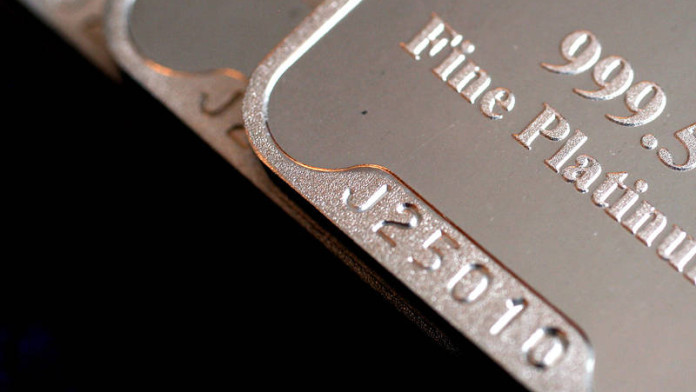
THE deficit in the platinum market is forecast to narrow in 2017 to some 120,000 ounces (2016: 270,000 oz), according to the World Platinum Investment Council (WPIC).
Publishing its fourth quarter review and 2017 preview, the organisation said demand would fall 6% to 7.78 million oz for the current year with notable declines in buying from the jewellery market and automotive sector. However, supply including metal from recycling, would fall 4% to 7.66 million oz.
Global refined supply is forecast to fall 2% to 5.92 million oz in 2017 of which South African production will be some 4.19 million oz – a 1% drop attributed to the closure of loss-making production and depletion of small-scale mining.
But the WPIC added that the ramp-up of new shafts on the Western Limb of the Bushveld Complex would result in 120,000 oz of new production. A further 65,000 oz in production would be released from concentrate stocks.
In the past, the contribution to supply of recycling has been significant, but the WPIC said this would moderate in 2017 with secondary supply falling 6% or 105,000 oz to 1.76 million oz.
The decline in supply from recycling was owing to a 20% year-on-year drop in platinum recovered from China. There had been heavy stock releases from fabricators in 2016 that would not be repeated, it said. Political uncertainty in the UK, as it neared its exit from the European Union, and elections in Germany, the Netherlands, and France would crimp growth in the automotive sector this year.
Platinum jewellery consumption is forecast to weaken 1% with China being the major influence of this change. Bridal jewellery sales are heavily marketed in China but the number of marriage registrations has fallen an average of 5% since 2013 and is expected to fall again this year.
Investment demand is forecast to fall to 250,000 oz in 2017 – half of that in 2016 – although there are hopes for an uptick as occurred in the fourth quarter of last year where there was a 200,000 oz increase in net buying quarter-on-quarter.
“Investment demand is often uneven, which is why we think it is wholly appropriate for the forecast to be prudent and conservative at the start of the year,” said James Wilson CEO of the WPIC. “As pieces are added to the investment jigsaw puzzle at quarterly intervals during the remainder of 2017, this should yield a more complete picture,” he said.
For 2016, the WPIC said total platinum supply had increased 1% to 7.97 million oz with greater secondary supply from jewellery and autocatalysts outweighing a fall in primary supply, primarily in South Africa.
Refined production declined by 2% to just over 6 million oz whilst total mining supply fell to 6.1 million oz, also 2% below 2015 output. Various issues at mines in South Africa, including stoppages and restructuring, led to the drop in refined production, despite higher output from Zimbabwe and North America, it said.
Global demand decreased marginally to 8.24 million oz, despite greater investment and stronger industrial and autocatalyst demand. Automotive demand climbed 1% year-on-year to 3.41 million oz.
OPTIMISM
Over the medium- to long-term the WPIC believes the established trend of supply deficits will continue. “On a number of metrics, platinum is undervalued,” said Trevor Raymond, director of research at WPIC pointing to the resilience of diesel automotive demand and the remarkable fact that of the four times platinum has traded below gold in the last 40 years, the current discount was the most profound.
“The trend in the platinum market that we have established over five years of consecutive deficits is that supply is falling while demand is flat to slightly up,” he said. He also disagreed with Goldman Sachs which said in a recent report that while the platinum sector had cut investment, it had not done enough.
“Capex has declined to something like $1bn from $4bn over a number of years. The targets that any of the companies said they would meet in production have not been met,” he said.
Commenting on the performance of the platinum price, which in dollars has been uninspiring for several years, Raymond said it appeared the price was being influenced by macro-economic factors.
“The platinum price has confounded a number of commentators. The correlation of platinum to gold has gone up significantly and we think the price is being driven by those macro-economic factors. But if you believe in increased world economic growth, that will be positive for industrial metals, and platinum is an industrial metal,” he said.
Above ground stockpiles of platinum had roughly halved from about four million ounces in 2012 to around two million ounces today.








